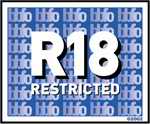| Pros :) | Cons :( |
|---|---|
| Protection of children is a priority | Applying guidelines is a subjective process |
| Provides information for parents | Impossible to predict harm/upset of sensitive viewers |
| Helps audiences make informed decisions | Implies age brackets key feature in determining response |
| Society needs some form of rules | Sees children as having only uninformed emotional responses to what they see |
| Cross section of examiners representing a diverse society | Suggests children are passive victims of media |
| Guidelines are relatively robust and clear | Films forced to take role of moral guidance |
| Examiners take work very seriously | Encourages parents to relinquish role and rely on 'nanny state' to control |
| Uses public research and current affairs when redefining guidelines every 4 years | Only 60% of households have children but all films are regulated |
| Enforces that some issues are negative and unacceptable in our society | Discourages production of challenging, alternative children's films |
| Provides protection for children with irresponsible parents | Realism in films is problematic and subjective |
| Enforced by governmental guidelines and laws | Internet is unsupervised and unregulated |
| Independent and has the films best interests - wants to promote the industry | Little or no evidence to support age ratings actually work |
| Local councils have the final say over the BBFC (e.g. Spiderman) | Scapegoat film industry - why not classify plays/books? |
| It means parents do not have to view a film prior to showing it to their child | No representation of children/teen age group in examiners |
| Employs the 'Just In Case' method to protect the vulnerable from possible reactions to a film | Audiences mostly unaware of info on BBFC website, including parents and those responsible |
| Masks the real problem within society (perhaps of poor parenting) as classifications give people false ideas children are protected |
Is film regulation sensible, useful to society, achieving its aim of protecting the vulnerable and upholding the law?
- Film regulation is sensible as it seeks to protect the vulnerable, however, it does mask the problem of why these children apparently do not know right from wrong and prevents helping the situation (e.g. the importance of helping parents socialise children)
- It is useful for society in that it maintains and upholds values and moralities within society, enforcing what is acceptable
- Within exhibition in cinemas i believe it is achieving its aim of protecting the vulnerable, however, because of Internet streaming and accessibility of DVDs/Blu-ray etc. at home most children have seen a film beyond their age bracket
- Because of classification, parents do not feel responsible to watch a film first and generally don't know of the BBFC website, so a child could see a film upsetting for that individual (e.g. a child of recently divorced parents may be more upset by a 12A with those themes than another)
- The guidelines are very successful in upholding the law as they follow what/what isn't illegal and maintain legal principles
- Perhaps encourage information over classification. E.g. label a film 'horror' or 'bad language' so parents can prevent their child from seeing if they know they are particularly vulnerable
- Promote the BBFC website to show parents the vast amounts of info available to prevent children seeing unsuitable films (especially 12As) and then complaining to the councils/BBFC
- Increase teenage/child representation in the examiners or at least amount of consultations with them to improve sceptical views on the majority of children's maturity levels
- Encourage people to think carefully for themselves when seeing a film or letting an underage see it to put the power back into the responsible parent's hands over the film makers/industry













